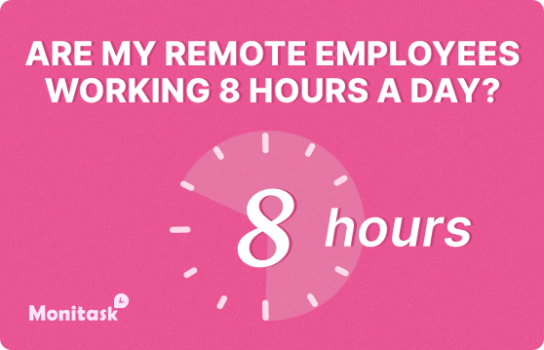What Is Liminal Thinking?
Liminal Thinking: A cognitive approach that challenges established beliefs and explores the boundaries of perception to foster innovation and personal growth. Key aspects include self-awareness, assumption questioning, and embracing ambiguity.
Liminal thinking, a concept popularized by Dave Gray in his 2016 book "Liminal Thinking: Create the Change You Want by Changing the Way You Think," has gained significant traction in organizational psychology and personal development circles. This approach to thinking and problem-solving encourages individuals to explore the edges of their understanding and challenge deeply held beliefs.
Origins and Definition
The term "liminal" derives from the Latin word "limen," meaning threshold. In anthropology, liminality refers to the transitional stage in rituals where participants are between their previous way of structuring their identity and a new way. Dave Gray adapted this concept to cognitive processes, defining liminal thinking as the art of finding, creating, and using thresholds to create change.
Liminal thinking involves:
- Recognizing and questioning our beliefs and assumptions
- Exploring the edges of our understanding
- Embracing ambiguity and uncertainty
- Seeking new perspectives and possibilities
Core Principles of Liminal Thinking
Dave Gray outlines six core principles of liminal thinking:
| Principle | Description |
| 1. Believe in your beliefs | Recognize that your beliefs are models of reality, not reality itself |
| 2. Beliefs are models | Understand that beliefs are simplifications of complex systems |
| 3. Our beliefs are created from our experiences | Acknowledge that personal experiences shape our beliefs |
| 4. Beliefs create a shared world | Realize that collective beliefs shape our social reality |
| 5. Beliefs are created by agreements | Recognize that many beliefs are socially constructed |
| 6. You can create new beliefs | Embrace the possibility of changing your beliefs intentionally |
Applications in HR and Organizational Development
Liminal thinking has found numerous applications in HR and organizational development:
- Change Management: Helping employees navigate transitions by reframing their perceptions
- Innovation: Encouraging teams to think beyond established norms and explore new possibilities
- Conflict Resolution: Facilitating understanding between parties with differing viewpoints
- Leadership Development: Cultivating leaders who can navigate complexity and ambiguity
Liminal Thinking vs. Traditional Problem-Solving
| Aspect | Liminal Thinking | Traditional Problem-Solving |
| Approach to Uncertainty | Embraces ambiguity | Seeks to eliminate uncertainty |
| Perspective on Solutions | Multiple possibilities exist | Focuses on finding the "right" answer |
| Belief Systems | Actively questioned and explored | Often taken for granted |
| Innovation Potential | High, encourages novel approaches | Limited by established frameworks |
| Adaptability | Highly adaptable to changing contexts | May struggle with rapid changes |
Implementing Liminal Thinking in Organizations
Introducing liminal thinking into organizational culture requires a deliberate approach:
- Create safe spaces for exploration: Encourage teams to question assumptions without fear of repercussions
- Promote diverse perspectives: Actively seek out and value different viewpoints within the organization
- Develop reflective practices: Incorporate regular reflection sessions to examine beliefs and decision-making processes
- Train for ambiguity: Provide training that helps employees become comfortable with uncertainty and complexity
- Reward innovative thinking: Recognize and celebrate instances where liminal thinking leads to breakthroughs
Challenges and Criticisms
While liminal thinking offers powerful tools for innovation and personal growth, it's not without its challenges:
- Resistance to change: Established organizational cultures may resist the uncertainty inherent in liminal thinking
- Cognitive discomfort: Questioning deeply held beliefs can be psychologically challenging for individuals
- Practical implementation: Translating liminal thinking principles into concrete actions can be difficult
- Measurability: The intangible nature of liminal thinking can make its impact hard to quantify
Critics argue that an overemphasis on liminal thinking could lead to decision paralysis or a lack of clear direction. Balancing liminal thinking with practical action remains a key challenge for organizations.
Tools and Techniques for Practicing Liminal Thinking
Several tools and techniques can help individuals and teams develop their liminal thinking skills:
- Belief mapping: Visually representing beliefs and their interconnections to identify assumptions
- Perspective-taking exercises: Deliberately adopting different viewpoints on a problem or situation
- Scenario planning: Exploring multiple possible futures to challenge current assumptions
- Mindfulness practices: Developing awareness of thought patterns and beliefs
- "What if?" sessions: Brainstorming sessions that encourage exploration of unlikely scenarios
Practical Tip: The "Five Whys" Technique A simple yet effective way to practice liminal thinking is the "Five Whys" technique. When faced with a problem or belief, ask "Why?" five times in succession. This helps uncover underlying assumptions and beliefs that may not be immediately apparent.
Liminal Thinking in the Digital Age
The rapid pace of technological change has made liminal thinking increasingly relevant. As AI and automation reshape industries, the ability to think at the edges of current understanding becomes crucial for innovation and adaptation.
A 2024 report by the World Economic Forum highlighted liminal thinking as one of the top 10 skills needed for the future workforce. The report estimated that by 2030, 65% of jobs will require some form of liminal thinking capability to navigate the complexities of human-AI collaboration and rapidly evolving business models.
Measuring the Impact of Liminal Thinking
While the intangible nature of liminal thinking can make measurement challenging, several organizations have developed frameworks to assess its impact:
| Metric | Description |
| Innovation Index | Measures the number and quality of new ideas generated |
| Adaptability Score | Assesses how quickly teams adapt to changing circumstances |
| Cognitive Flexibility Rating | Evaluates an individual's ability to shift between different mental models |
| Decision Quality Metric | Measures the effectiveness of decisions made under uncertainty |
The Global Innovation Institute reports that organizations implementing liminal thinking practices see an average 31% improvement in their Innovation Index scores within the first year of adoption.
Future Directions and Research
As liminal thinking continues to gain traction, several areas of research are emerging:
- Neuroscience of liminal thinking: Exploring the brain mechanisms involved in cognitive flexibility and belief change
- AI-assisted liminal thinking: Investigating how AI can support humans in exploring the edges of knowledge
- Cross-cultural applications: Examining how liminal thinking practices vary across different cultural contexts
- Educational integration: Developing curricula that foster liminal thinking skills from an early age
The Journal of Cognitive Psychology recently announced a special issue for 2025 focused on "Liminal Thinking in the Age of AI," indicating growing academic interest in this field.
Conclusion
Liminal thinking represents a powerful approach to cognitive flexibility and innovation in an increasingly complex world. While it presents challenges in implementation and measurement, its potential to drive personal growth and organizational innovation is significant. As we continue to navigate rapid technological and social change, the ability to think liminally – to explore the edges of our understanding and challenge our deeply held beliefs – will likely become an increasingly valuable skill across all sectors of society.
For HR professionals and organizational leaders, fostering liminal thinking capabilities within their teams could be a key differentiator in driving innovation, managing change, and adapting to the evolving demands of the global marketplace. As research in this field progresses, we can expect to see more refined techniques and applications of liminal thinking principles in various aspects of personal and professional development.


